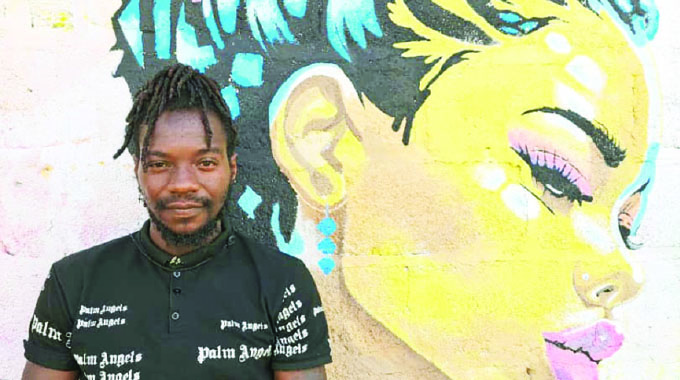Hwati explores culture through found objects
Arts Correspondent
Zimbabwean visual artist, arts lecturer and musician Masimba Hwati (32), is inspired by the principle of the energy of objects in found art — l’Art trouve.
The Zimbabwean Found Object art movement is an art genre in which artists look for inspiration in disused objects and create recycled art from industrial and domestic debris.
The movement has developed from the predictable pattern of assemblage art to a neo-anthropological and cultural inquiry and record.
Using the remnants of industry as his materials, the professional artist produces thought-provoking work in a new artistic genre that has evolved from conventional traditionally grounded art to the unpredictable conceptual work derived from found objects.
Masimba uses different materials in his creation process, from old shoes, leather, clay, metal, wood and bone. The works that emerge- are meant to trigger alternative reality responses.
His work is exploratory.
He searches for imagery and visual association in cultural, ethical, spiritual and social history of mankind with Africa as locus.
He alludes to issues like documentation and archiving of African culture and history.
In a way trying to explain what happens to a people in the context of trying to re-discover themselves.
He is also inspired by and interested in wood as a medium, the ageing and weathering processes that it goes through, and the warmth of terracotta.
“Clay has a grace and ancient warmth that inspires me” says the artist.
“My purpose is to invest it with new forms and new meanings of our times”.
As an artist Hwati has pursued the “law of variation” which states that to every object there are 35 variations. Hwati never contemplated that in his life-time he would find a profitable idea in scrap metal, plastics, wood, clay and found objects, all of which have become essential tools of his trade due to the shortages of art materials in Zimbabwe.
Born on the 16 October, 1982, Masimba Hwati grew up in Harare’s oldest high density suburb of Highfield and attended Chipembere Primary School, Highfield, before proceeding to Presbyterian Secondary in Mhondoro.
Hwati attained his Secondary education at Presbyterian High in Mhondoro and Highfield High 1, prior to embarking on a visual arts course at the Harare Polytechnic in 2001.
Still based at the Harare Polytechnic he teaches visual arts and is currently one of the three-dimensional art instructors.
At 25 years of age Masimba Hwati scored a “first” when he won the National Arts and Merits Awards accolade for outstanding mixed-media piece entitled “Worship”
The artist was recently inspired by the traditional Mbira used in the 15th Century by Shona rain-makers, mediums and shamans to summon the land spirits for rain and other traditional rites, rituals and ceremonies.
His latest innovation is an ingenious contemporary instrument reconstructed from the prototype traditional Mbira as a 21st Century design.
A first of its kind, Hwati’s instrument, has justifiably achieved a significant place in the innovations of the Mbira in Zimbabwe.
Within Hwati’s handmade instrument is the technical history of the instrument’s origins and developments which he has modified and customised to contemporary musical adaptations.
Says Hwati: “My sextant ideophonic Mbira known as the Rain-maker is a symbol, an invention, a musical instrument and a vessel of the history and culture of Zimbabwe.”
The iconic instrument is made of hardwood, steel and bone; it measures 80cm in diameter.
Hwati’s desire was not to reinvent the mbira of the bygone generation in African antiquity, but to innovate, edify and reclaim this traditional Zimbabwean instrument in a new improved multi-sonic prototype.






Comments